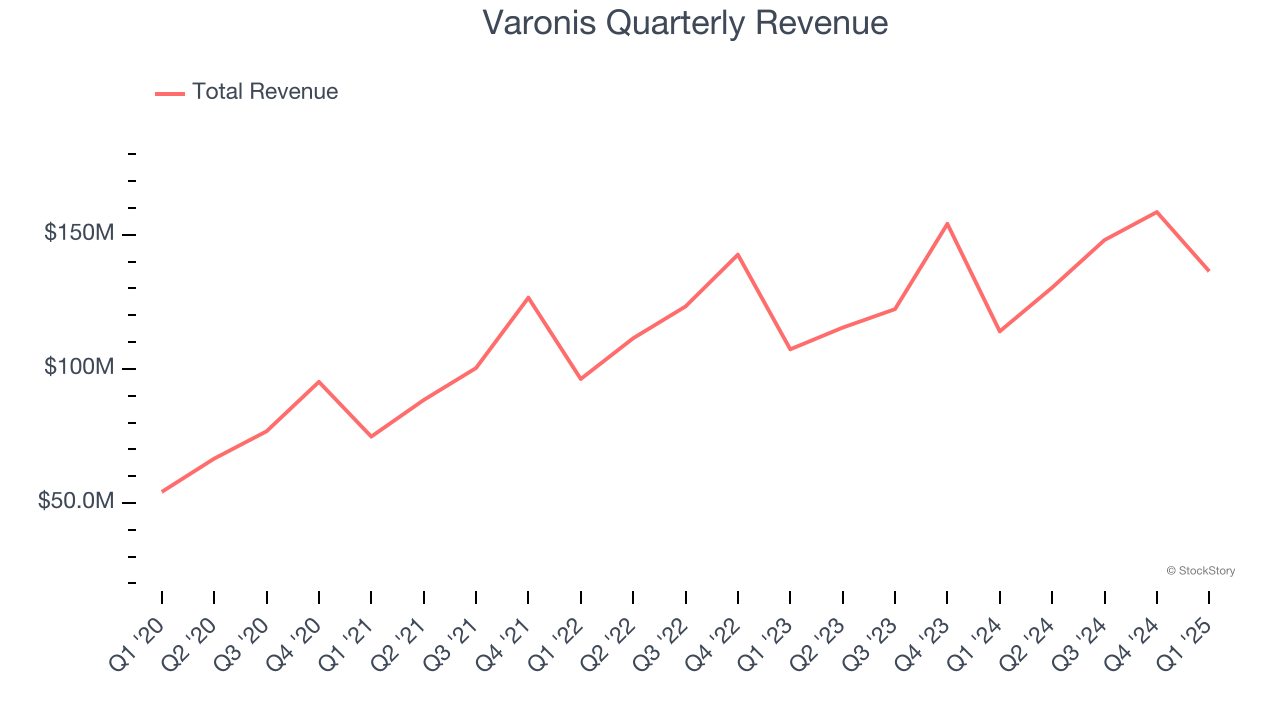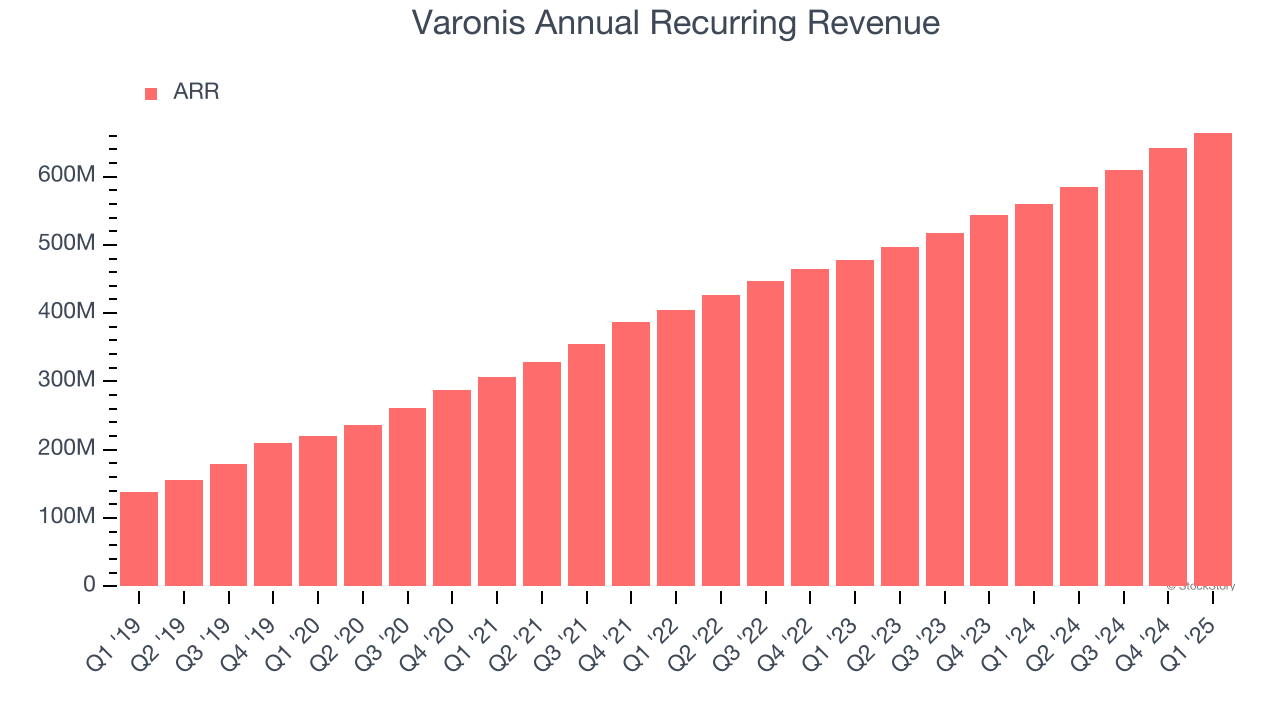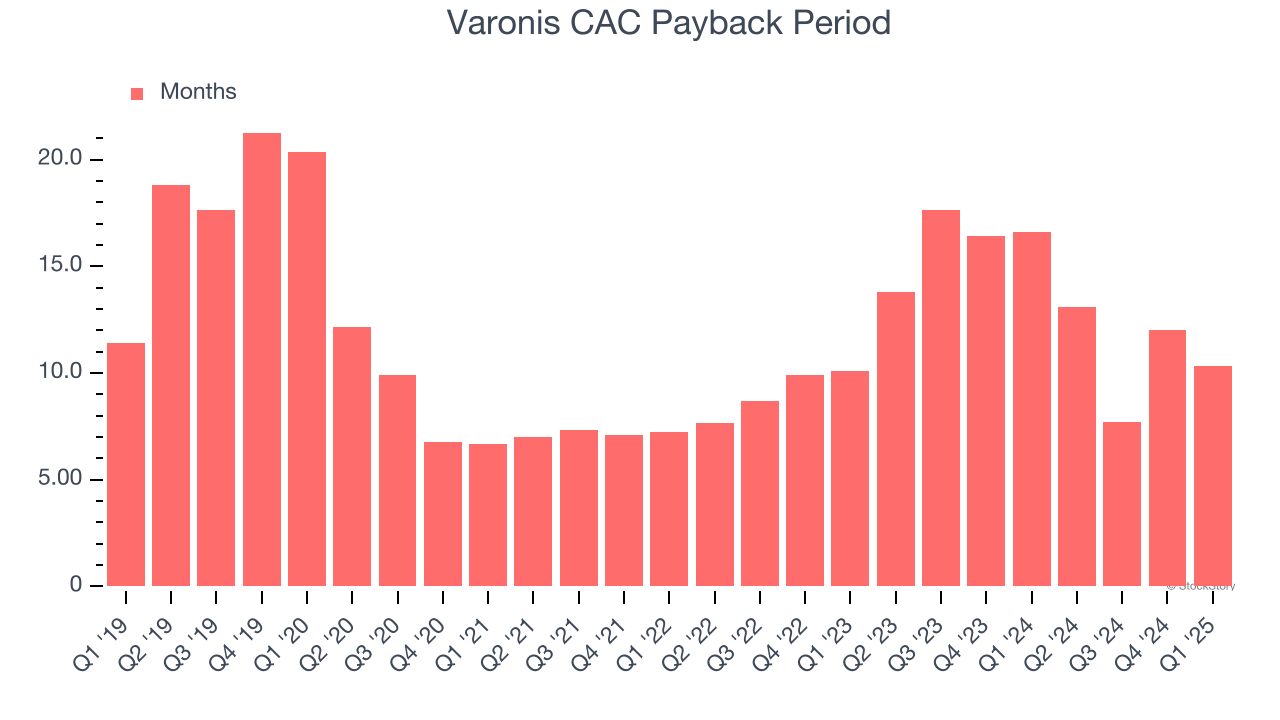
Data protection and security software company Varonis (NASDAQ:VRNS) reported revenue ahead of Wall Street’s expectations in Q1 CY2025, with sales up 19.6% year on year to $136.4 million. The company expects next quarter’s revenue to be around $147.5 million, close to analysts’ estimates. Its non-GAAP profit of $0.01 per share was significantly above analysts’ consensus estimates.
Is now the time to buy Varonis? Find out by accessing our full research report, it’s free.
Varonis (VRNS) Q1 CY2025 Highlights:
- Revenue: $136.4 million vs analyst estimates of $133.4 million (19.6% year-on-year growth, 2.3% beat)
- Adjusted EPS: $0.01 vs analyst estimates of -$0.05 (significant beat)
- Adjusted Operating Income: -$6.5 million vs analyst estimates of -$11.98 million (-4.8% margin, 45.7% beat)
- The company reconfirmed its revenue guidance for the full year of $617.5 million at the midpoint
- Management raised its full-year Adjusted EPS guidance to $0.16 at the midpoint, a 3.3% increase
- Operating Margin: -32.1%, up from -41.8% in the same quarter last year
- Free Cash Flow Margin: 47.9%, up from 12.6% in the previous quarter
- Annual Recurring Revenue: $664.3 million at quarter end, up 18.6% year on year
- Billings: $142.4 million at quarter end, up 21.1% year on year
- Market Capitalization: $4.91 billion
Yaki Faitelson, Varonis CEO, said, "Our first quarter results reflect the momentum of our SaaS platform as well as the many tailwinds that are contributing to the growth in our business, including MDDR and Generative AI. Our solution has never been more relevant, and we look forward to completing our SaaS transition this year which will unlock many more benefits for our customers and our company as we execute on our significant market opportunity.”
Company Overview
Founded by a duo of former Israeli Defense Forces cyber warfare engineers, Varonis (NASDAQ:VRNS) offers software-as-service that helps customers protect data from cyber threats and gain visibility into how enterprise data is being used.
Sales Growth
A company’s long-term sales performance can indicate its overall quality. Any business can experience short-term success, but top-performing ones enjoy sustained growth for years. Over the last three years, Varonis grew its sales at a 11.7% compounded annual growth rate. Although this growth is acceptable on an absolute basis, it fell short of our standards for the software sector, which enjoys a number of secular tailwinds.

This quarter, Varonis reported year-on-year revenue growth of 19.6%, and its $136.4 million of revenue exceeded Wall Street’s estimates by 2.3%. Company management is currently guiding for a 13.2% year-on-year increase in sales next quarter.
Looking further ahead, sell-side analysts expect revenue to grow 12.4% over the next 12 months, similar to its three-year rate. This projection is above average for the sector and implies its newer products and services will help sustain its historical top-line performance.
Today’s young investors won’t have read the timeless lessons in Gorilla Game: Picking Winners In High Technology because it was written more than 20 years ago when Microsoft and Apple were first establishing their supremacy. But if we apply the same principles, then enterprise software stocks leveraging their own generative AI capabilities may well be the Gorillas of the future. So, in that spirit, we are excited to present our Special Free Report on a profitable, fast-growing enterprise software stock that is already riding the automation wave and looking to catch the generative AI next.
Annual Recurring Revenue
While reported revenue for a software company can include low-margin items like implementation fees, annual recurring revenue (ARR) is a sum of the next 12 months of contracted revenue purely from software subscriptions, or the high-margin, predictable revenue streams that make SaaS businesses so valuable.
Varonis’s ARR punched in at $664.3 million in Q1, and over the last four quarters, its growth was impressive as it averaged 18% year-on-year increases. This alternate topline metric grew faster than total sales, which likely means that the recurring portions of the business are growing faster than less predictable, choppier ones such as implementation fees. That could be a good sign for future revenue growth. 
Customer Acquisition Efficiency
The customer acquisition cost (CAC) payback period measures the months a company needs to recoup the money spent on acquiring a new customer. This metric helps assess how quickly a business can break even on its sales and marketing investments.
Varonis is extremely efficient at acquiring new customers, and its CAC payback period checked in at 10.3 months this quarter. The company’s rapid recovery of its customer acquisition costs indicates it has a highly differentiated product offering and a strong brand reputation. These dynamics give Varonis more resources to pursue new product initiatives while maintaining the flexibility to increase its sales and marketing investments. 
Key Takeaways from Varonis’s Q1 Results
We were impressed by how significantly Varonis blew past analysts’ billings expectations this quarter. We were also happy its revenue outperformed Wall Street’s estimates. On the other hand, its EPS guidance for next quarter missed significantly and its full-year EPS guidance fell short of Wall Street’s estimates. Overall, this was a mixed quarter, and the outlook could weigh on shares. The stock remained flat at $44.27 immediately following the results.
So should you invest in Varonis right now? If you’re making that decision, you should consider the bigger picture of valuation, business qualities, as well as the latest earnings. We cover that in our actionable full research report which you can read here, it’s free.
